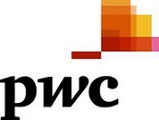 In the 10th anniversary edition of the “Behind the Numbers” report, HRI forecasts its lowest medical cost trend in the past decade
In the 10th anniversary edition of the “Behind the Numbers” report, HRI forecasts its lowest medical cost trend in the past decade
PwC’s Health Research Institute (HRI) projects U.S. medical inflation will dip to 6.5 percent in 2016, capping a ten-year trend of slowing employer medical cost-trend growth in the employer-sponsored market.
In the latest installment of its annual report Medical Cost Trend: Behind the Numbers, HRI identifies three factors that are expected to reduce the medical growth rate in 2016:
- The Affordable Care Act’s looming “Cadillac tax” on high-priced plans which is accelerating cost-shifting from employers to employees to reduce costs;
- Greater adoption of “virtual care” technology that can be more efficient and convenient than traditional medical care; and
- New health advisers helping to steer consumers to more efficient healthcare.
Despite the year-over-year slowdown, HRI also reported that medical inflation still outpaces general inflation, underscoring the challenges ahead for the health industry. In fact, Behind the Numbers identified two factors that will likely exert inflationary pressure on health spending in the year ahead:
- New specialty drugs entering the market in 2015 and 2016 will continue to push health spending growth upward; and
- Major cyber-security breaches are forcing health companies to step up investments to guard personal health data, adding to the overall cost of delivering care.
“While the health industry has improved in efficiency over the past decade, the slowing employer medical cost growth is due to the increased role of savvy health consumers facing higher cost-sharing responsibilities and more complex decisions,” said Kelly Barnes, PwC’s U.S. health industries leader. “This will continue to impact the New Health Economy in the coming years.”
After accounting for likely changes in benefit design, such as higher deductibles and narrow networks, HRI projects a net growth rate of 4.5 percent in 2016. Benefit design changes typically hold down spending growth by shifting financial responsibility to consumers, who often choose less expensive options.
Projecting medical cost growth rates – a 10-year perspective
When HRI made its first projection of healthcare spending, the growth rate for 2007 was almost 12 percent. The trend rate went down in 2008 but remained high for the next four years. Four key cost growth factors HRI has observed over the past decade:
- The healthcare-spending trajectory has leveled off but is not declining;
- Cost sharing slows consumer use of health services;
- Curtailing inpatient care lowers costs; and
- The ACA has had minimal direct effect on employer health costs.
Like its predecessors, the 10th annual Behind the Numbers report draws upon findings from PwC’s 2015 Health and Well-Being Touchstone Survey, one of the most comprehensive studies available on benefit plans offered by U.S.-based employers. Key findings include:
- High-deductible health plans continue to grow in popularity with employers: they are now the most prevalent option with 31 percent of employers, up from 26 percent last year. Also, 38 percent of employers are considering offering only high-deductible plans on top of the 25 percent that already solely offer high-deductible plans;
- Spurred by the ACA, 44 percent of employers are now considering moving active employees to a private insurance exchange, while more than 50 percent are considering adopting a defined-contribution approach to financing health benefits; and
- Employers have significantly increased the number of health plan options they offer, jumping from 2.9 options on average last year to 4.1 options today. Large employers lead the way, jumping from 3.6 to 5.7 medical plan options.
“The New Health Economy is reshaping the landscape for the employer-based health insurance plans that continue to cover most Americans,” said Michael Thompson, principal, PwC’s human resource services practice. “One result is that consumers have more plan choices than ever before. But at the same time, the pressure on employers to control their health budgets means that employees are having to pick up more of their healthcare tab than ever before.”
Learn more about Behind the Numbers 2016 during a Twitter Chat to be held on Wednesday, June 10th from 1-2pm EST by following #PwCHealthBTN. Featuring Ceci Connolly (@ceciconnolly) and Ben Isgur (@bisgur) of PwC’s Health Research Institute, the chat will engage with those interested in health and spending to explore these new cost projections.
HRI’s Behind the Numbers analysis measures spending growth in the employer-based market—the foundation of the U.S. health system, covering about 150 million Americans. Changes to government health insurance, including new plans sold on public exchanges, are not within the purview of this analysis – but spending growth for government plans such as Medicare has slowed as well.
About PwC’s Health Research Institute (HRI)
PwC’s Health Research Institute provides new intelligence, perspectives, and analysis on trends affecting all health-related industries. The Health Research Institute helps executive decision makers navigate change through primary research and collaborative exchange. Its views are shaped by a network of professionals with executive and day-to-day experience in the health industry. HRI research is independent and not sponsored by businesses, government, or other institutions.
